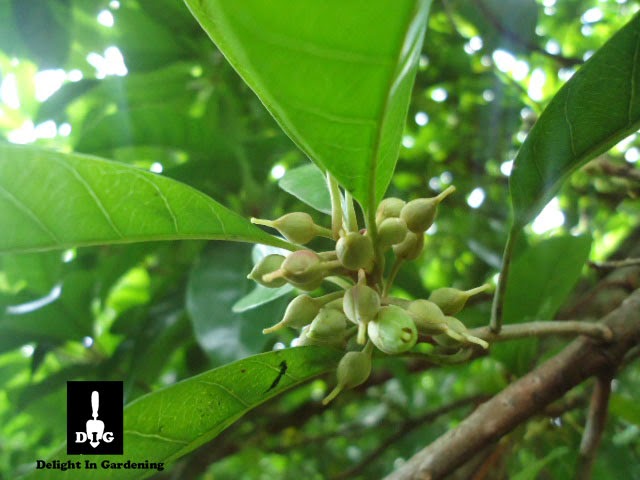In this account of agventures (adVENTURES in AGgriculture), I can provide no justifiable explanation why this my first encounter with this fruit. I have never seen it sold in local farmers' market. Sadly, this is not a familiar fixture of home gardens. Maybe, others are in the same predicament as I: clueless about canistel.
 |
| Almost ripe canistel |
A fruit is often imagined to be dripping of nature's nectar. But the canistel, like this source describes, is a "powdery" fruit. The green fruit ripens to yellow skin and yellow insides. Inside the flesh of the fruit are large, shiny brown seeds enclosed in what I can only describe as a fruity "plastic" casing. The texture of the fruit pulp which is described as similar to a hard boiled egg has gained it the name Egg Fruit. This name may also be attributed to the colour of the insides and shape of the fruit itself.
 |
| The delicious insides |
 |
| Green canistel |
First impresssions of Canistel
- Sweet! Very sweet. It tastes like apricot with a subtle undertone of sugar apple. No sooner had I completed the staging of the open canistel, when an ant came to the picnic by way of agreement.
- The texture of the fruit is like cooked sweet potatoes (another reference to the sweet taste). It's like a slice of cake...It's like desert and food in one!
- The scent, a heady pungence that I liken to that of apricot also. Before the fruit even forms, the scent of the flowers attract bees to the tree.
Although I have been told that the fruit is made into delicious drinks, a Google search will produce recipe results such as ice-creams and pies. Nutritional value of canistel includes dietary fibre, carbohydrates, niacin, carotene, ascorbic acid, calcium and phosphorus.
 |
| Canistel flowers |
Are you convinced yet that you should have this fruit tree in your yard? Propagated canistel plants can be sourced at the Barthe Propagation Station at Myers Bridge, Soufriere.
Additional sources:



